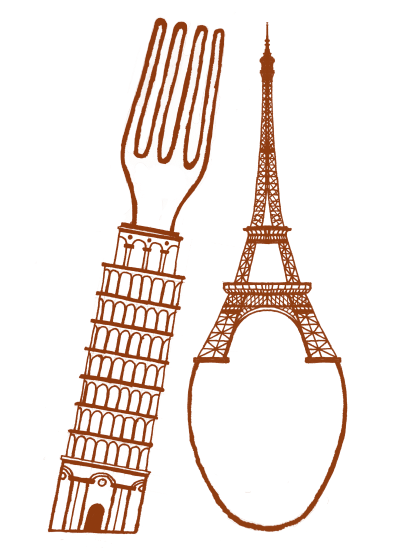Il presente indicativo - Introduction lesson on the present tense in Italian. This lesson will tackle the regular verbs. Ciao a tutti! Welcome to an important step in Italian grammar.
By the end of this lesson, you will be more confident and have better knowledge of how to conjugate il Presente Indicativo - the Present Indicative. If you haven't followed the previous lessons on verbs, I suggest you do that now because those two lessons will give you the basis for today's lesson. You can find the verb Presentarsi here and the Auxiliary verbs Essere and Avere here.
In today's lesson, we're concentrating on the three ending of the Infinitive verbs in Italian. We'll tackle the regular verbs. There will be a following lesson on the irregular present tense verbs.
1. Prima tappa
There are three types of endings for the Present Indicative in Italian -ARE, -ERE and -IRE. If the verb is regular, the ending is removed and an ending is added according to the pronoun.
Io
Tu
Lui/lei/Lei
Noi
Voi
Loro
ARE
Parlare (to speak)
parlo
parli
parla
parliamo
parlate
parlano
ERE
Prendere (to take)
prendo
prendi
prende
prendiamo
prendete
prendono
IRE
Aprire (to open)
apro
apri
apre
apriamo
aprite
aprono
IRE
FINIRE (to finish)
finisco
finisci
finisce
finiamo
finite
finiscono
2. Seconda tappa
As we've just seen in the examples above, some of the verbs that end in -IRE have a different kind of ending (as seen in Finire (to finish). Other verbs that have the same ending are Preferire (to prefer), Capire (to understand), Pulire (to clean) and Spedire (to send).
3. Terza tappa
Some verbs finishing in -CARE or -GARE need an extra H before the normal ending in front of the second person singular (TU) and first person plural (NOI).
Examples
CERCARE (to look for) - Io cerco, tu cerchi, lui/lei cerca, noi cerchiamo, voi cercate, loro cercano.
PAGARE (to pay) - Io pago, tu paghi, lui/lei paga, noi paghiamo, voi pagate, loro pagano.
Verbs finishing in -CIARE or -GIARE lose the -i when the ending starts with an -i (Tu, Noi).
Examples
Viaggiare (to travel) - Io viaggio, tu viaggii - viaggi, lui/lei viaggia, noi viaggiiamo - viaggiamo, voi viaggiate, loro viaggiano.
Mangiare (to eat) - io mangio, tu mangii - mangi, lui/lei mangia, noi mangiiamo - mangiamo, voi mangiate, loro mangiano.
4. Quarta tappa
The Present Indicative is used in a number of different cases. The following are the most common cases:
- Express a current action or a habitual action
Oggi incontro Lucia. (Today I'm meeting Lucia).
Ogni sera dormo alle dieci. (Every night, I sleep at 10pm).
- Express an action happening in the future
Lunedì prossimo comincio l'Università. (Next Monday I will start University).
- Express an action started in the past and continuing in the present
Insegno francese in Inghilterra da sette anni. (I have been teaching French in the UK for the past seven years).
Scrivo un libro da due anni. (I've been writing a novel for the past two years).
That's all from me for today. There will be more lessons in the coming weeks on this topic as it's such an important step in your journey of learning Italian. If you have any questions, please feel free to leave them in the comments below. I will see you next week with another lesson. Now go ahead and click the link below, download the worksheet and practice the present tense.
